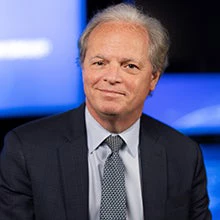It’s been 10 years since the World Bank signed on to the Millennium Development Goals. At the time, I managed the Bank's HIPC initiative, providing debt relief for the most heavily indebted countries, and I remember the hope we all felt. I am now responsible for IDA—the World Bank’s fund for 79 of the poorest countries, for whom the MDGs are critical, and I can say that our commitment to these goals remains as strong today, if not stronger.
We have made considerable progress on many of the goals. Growth over the past decade has contributed to reductions in extreme poverty. In 1990, over 40 percent of the population in developing countries lived on less than $1.25 per day. By 2005, that share fell to roughly 25 percent and is expected to fall to 15 percent by 2015, more than meeting the goal to halve extreme poverty.
Nevertheless, we cannot afford to become complacent. Much of the progress on extreme poverty can be attributed to gains in East Asia, especially China. Progress in Sub-Saharan Africa and South Asia, which account for the some of the highest concentrations of poverty, has been slower. Also, the proportion of people going hungry has seen setbacks recently. In 1990, the share of hungry people was 20 percent, falling to 16 percent in 2005 but rising to an estimated 19 percent in 2009 following subsequent food, fuel, and financial crises.
As I head to New York on Monday to take part in a series of talks at the MDG Summit, I can’t help but focus on the challenges remaining, such as the need to focus on long-term development objectives while remaining flexible enough to respond to short-term crises that could otherwise undermine long-term outcomes and also the emerging long-term challenges like climate change and food security.
With only five years to go before 2015, we need to find ways to strengthen our impact, maximizing the effectiveness of every scarce aid dollar. That means a strong focus on results, accountability and transparency, and enhancing international partnerships. I am pleased to see that Bono helpfully reinforced this in a New York Times editorial, highlighting the importance of “promoting transparency and investing in what works.”
IDA, like the rest of the World Bank Group, is prepared to rise to the challenges. IDA provides no-interest credits and grants that support growth through investment in infrastructure and human capital. IDA projects help prevent malnutrition in young children and pregnant women. It helps keep children in school and health clinics open. And these are just a few of the areas in which we have seen real results.
Results will remain central to everything we do, and we are working to increase transparency and information sharing through open data mapping of results and the launch of a database that tracks aid flows.
While in New York, I'll be reaching out to governments, and not just finance ministers, but also ministers for environment, health, education, and so on. Development is complex, and we all need to work together to find lasting solutions. The highly motivated staff of the World Bank Group can be counted on to do our share.
Related Links:


Join the Conversation